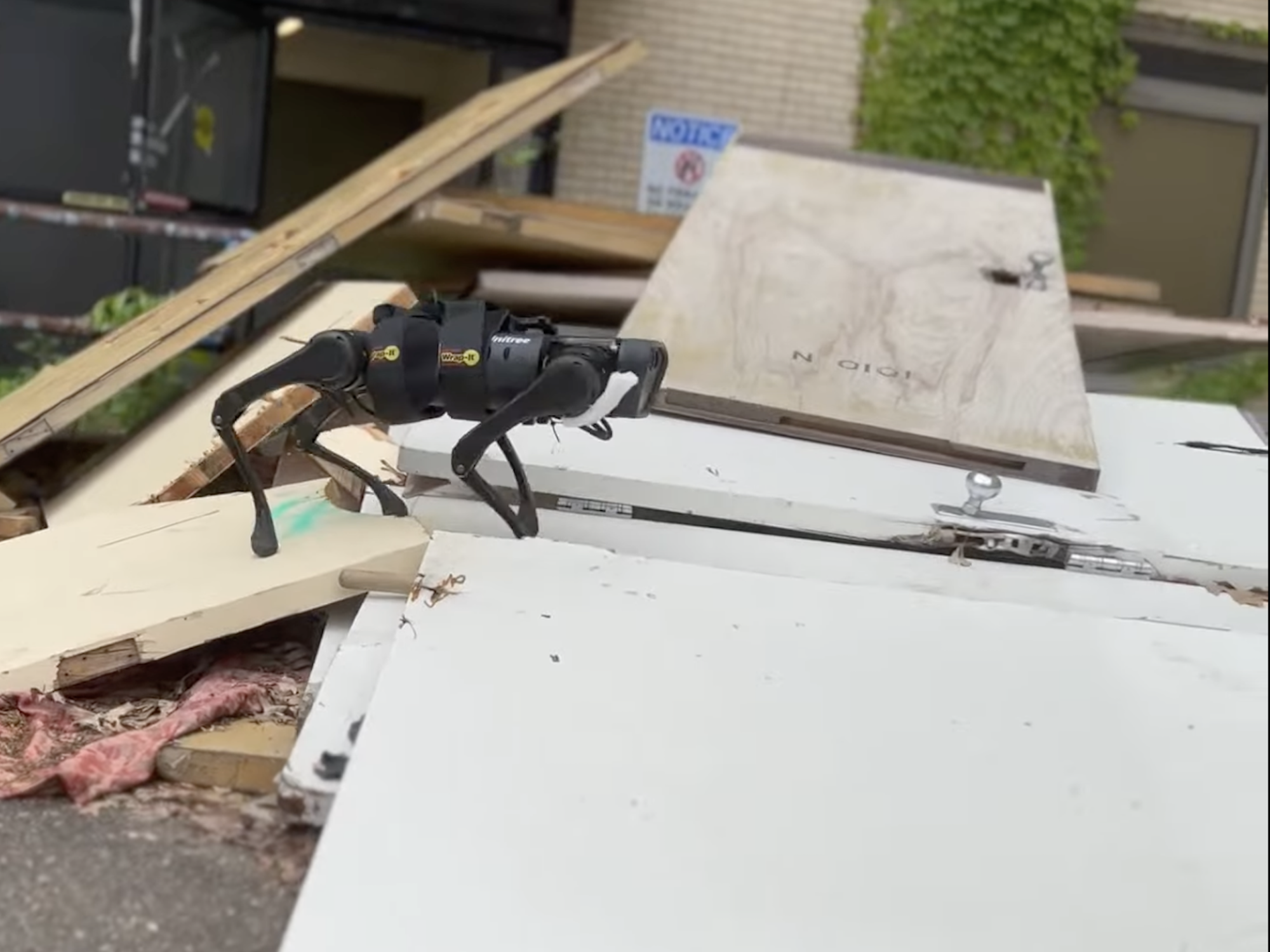

Another week, another uncanny advancement for the burgeoning four-legged robot “dog” industry: MIT Technology Review just previewed a quadrupedal creation similar to Boston Dynamics’ Spot capable of taking strolls over rocky terrain, climbing up stairs, and even hopping over small gaps while relying only an onboard visual camera and some AI reinforcement learning. Other robots may move similarly, or better, across environments, but the majority of them require internal mapping software. The new strutting dog-bot, however, represents a design breakthrough not only in the real-time assessment of its surroundings, but in the variety of settings it can successfully navigate.
[Related: Boston Dynamics starts a legal dog fight with competitor Ghost.]
Check out a video of the little machine in action—it’s pretty darn cute.

“Animals are capable of precise and agile locomotion using vision. Replicating this ability has been a long-standing goal in robotics,” the Carnegie Mellon research team explains in their YouTube video‘s description, before explaining that the robot’s systems were first trained through trial and error in simulation environments of areas like staircases and stepping stones. Once the team completed that phase, their four-legged walker utilized its onboard video camera to process what was in front of it while referring back to its previous reinforcement training to adapt as needed.
[Related: Ghost Robotics now makes a lethal robot dog.]
According to Technology Review, the lack of pre-trial mapping is a major leap forward (so to speak) for mobile robots, as a better, more consistent real-time analysis of surroundings could one day greatly widen their accessibility and deployment. Although the team’s quadruped still has some trouble with slippery surfaces and visually noisy environments like tall grass, the progress remains incredibly impressive ahead of the project’s big debut at next month’s Conference on Robot Learning.
